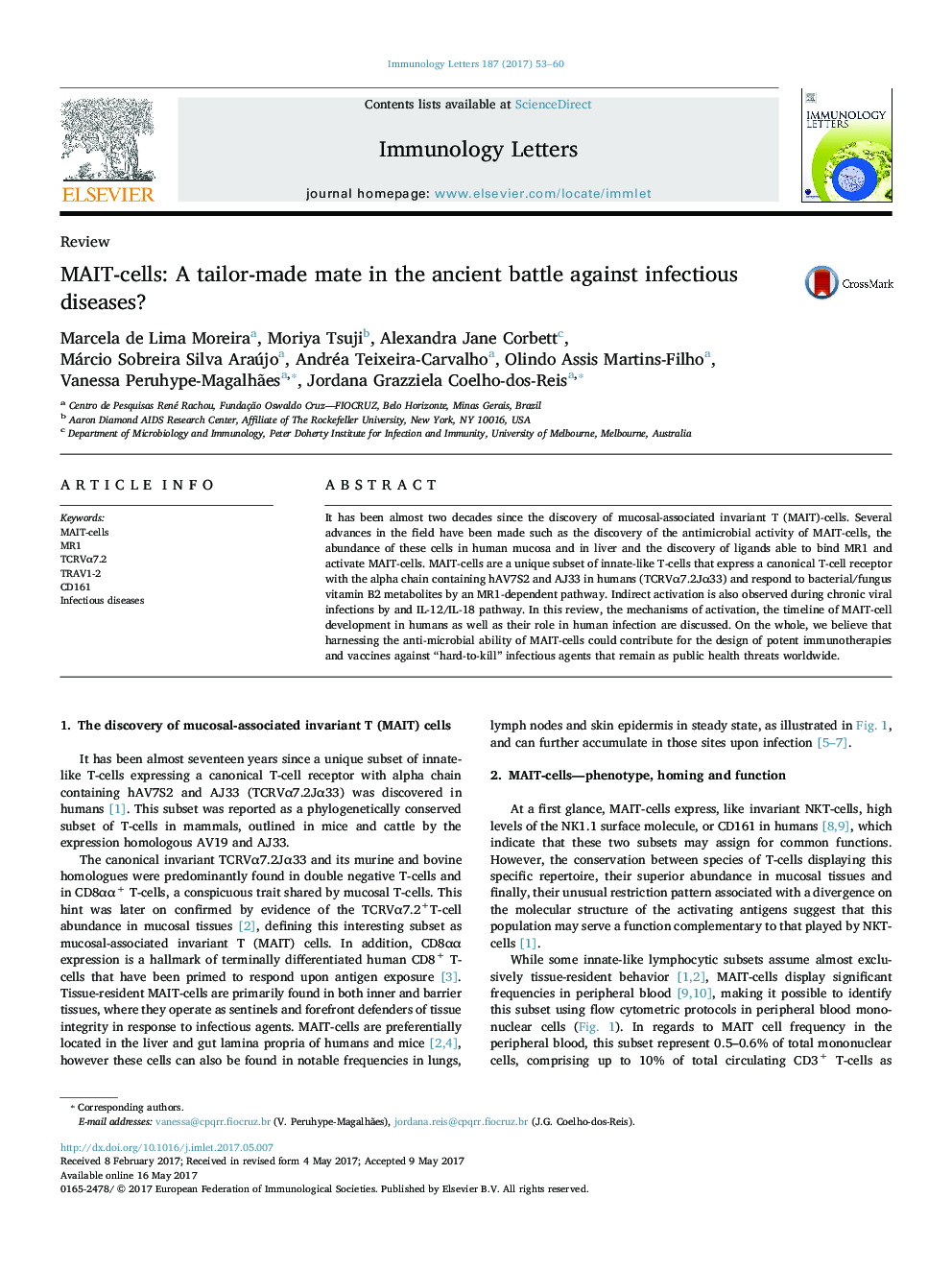| کد مقاله | کد نشریه | سال انتشار | مقاله انگلیسی | نسخه تمام متن |
|---|---|---|---|---|
| 5666598 | 1591539 | 2017 | 8 صفحه PDF | دانلود رایگان |
- MAIT is a unique innate-like T-cell subset that expresses TCRVα7.2Jα33 in humans.
- MAIT responds to MR1-presented vitamin B2 metabolites in an intricate manner.
- MR1-independent MAIT activation is induced by IL-12/IL-18 pathway.
- TCR usage is highly heterogeneous, indicating potential plural responses yet unveiled.
- MAIT anti-microbial ability should be harnessed for therapeutic purposes.
It has been almost two decades since the discovery of mucosal-associated invariant T (MAIT)-cells. Several advances in the field have been made such as the discovery of the antimicrobial activity of MAIT-cells, the abundance of these cells in human mucosa and in liver and the discovery of ligands able to bind MR1 and activate MAIT-cells. MAIT-cells are a unique subset of innate-like T-cells that express a canonical T-cell receptor with the alpha chain containing hAV7S2 and AJ33 in humans (TCRVα7.2Jα33) and respond to bacterial/fungus vitamin B2 metabolites by an MR1-dependent pathway. Indirect activation is also observed during chronic viral infections by and IL-12/IL-18 pathway. In this review, the mechanisms of activation, the timeline of MAIT-cell development in humans as well as their role in human infection are discussed. On the whole, we believe that harnessing the anti-microbial ability of MAIT-cells could contribute for the design of potent immunotherapies and vaccines against “hard-to-kill” infectious agents that remain as public health threats worldwide.
142
Journal: Immunology Letters - Volume 187, July 2017, Pages 53-60
